|

Old Clouth firm
Logo

"CLOUTH"
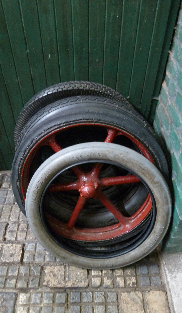
Altreifen


Balloon Gondola

Cöln Beginning of 20
Century.

Franz Clouth
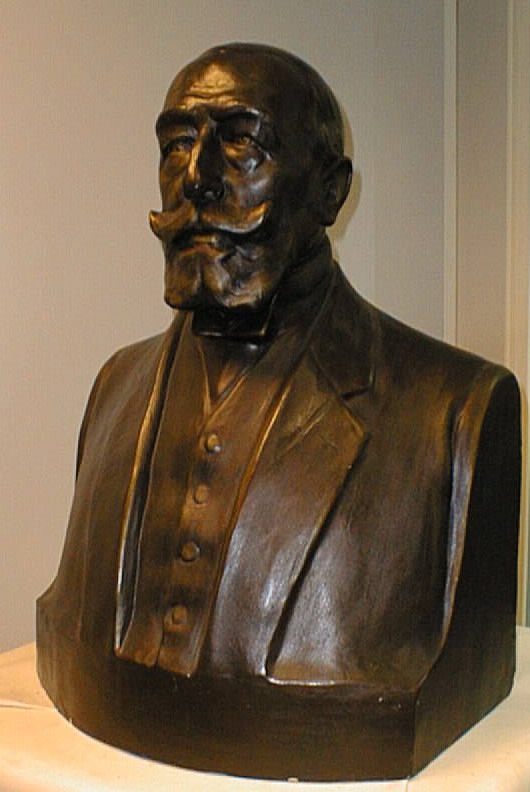
Bronze F. Clouth Bust
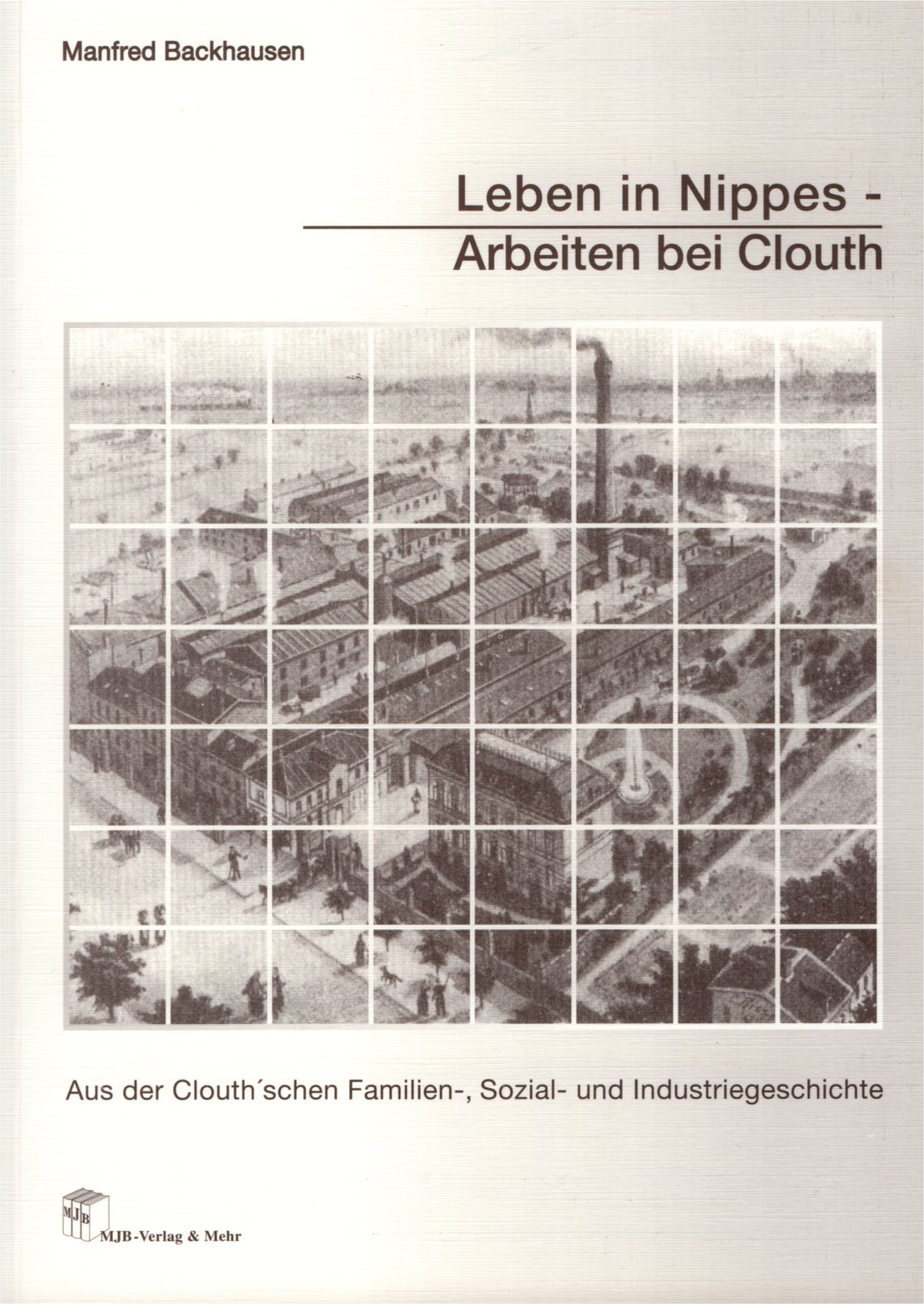
Clouth Book Nr.1
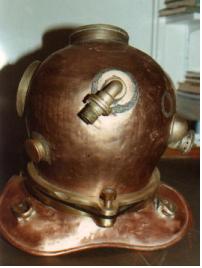
Diving Helmet Clouth
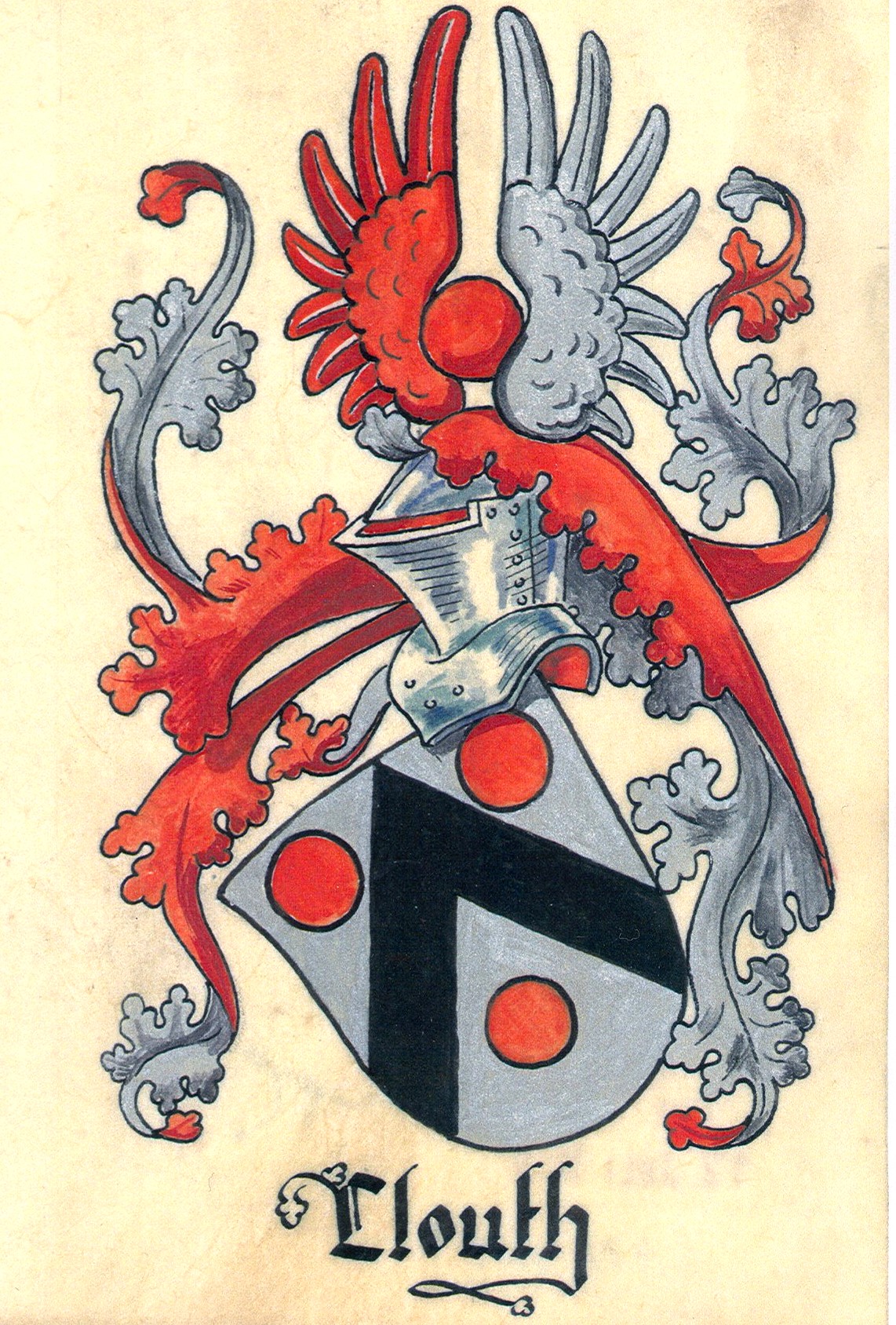
Clouth-Wappen 1923
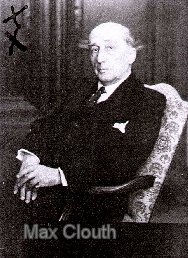
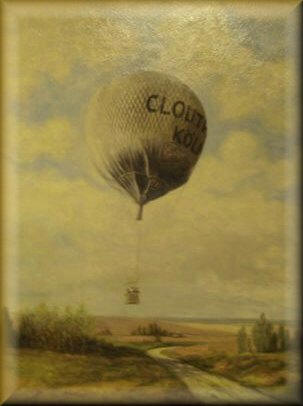
Clouth Balloon XI
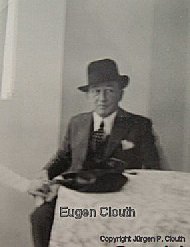
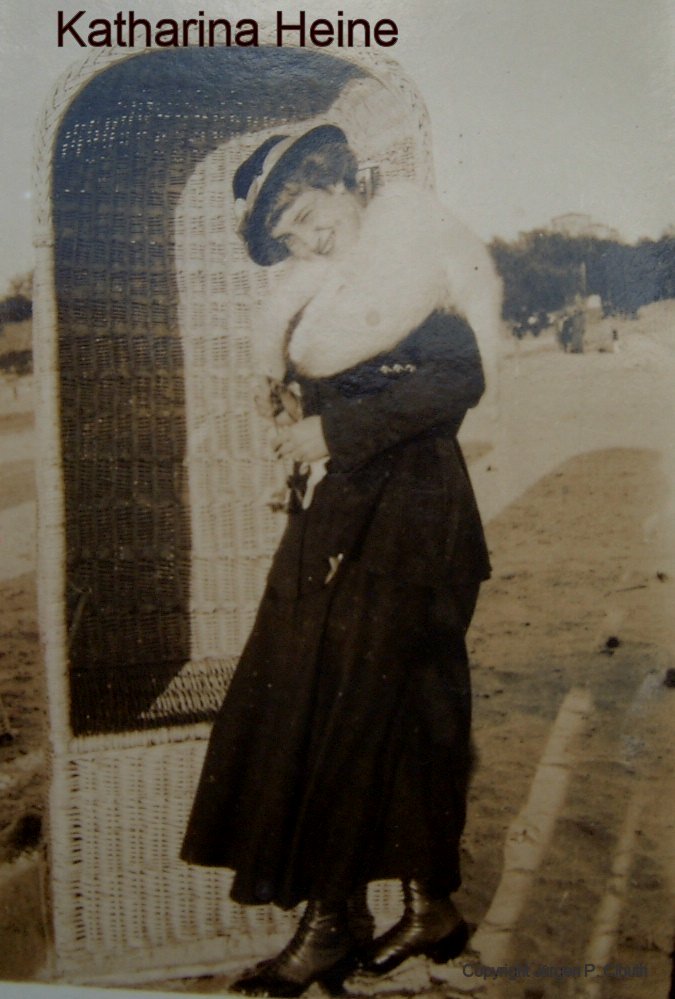
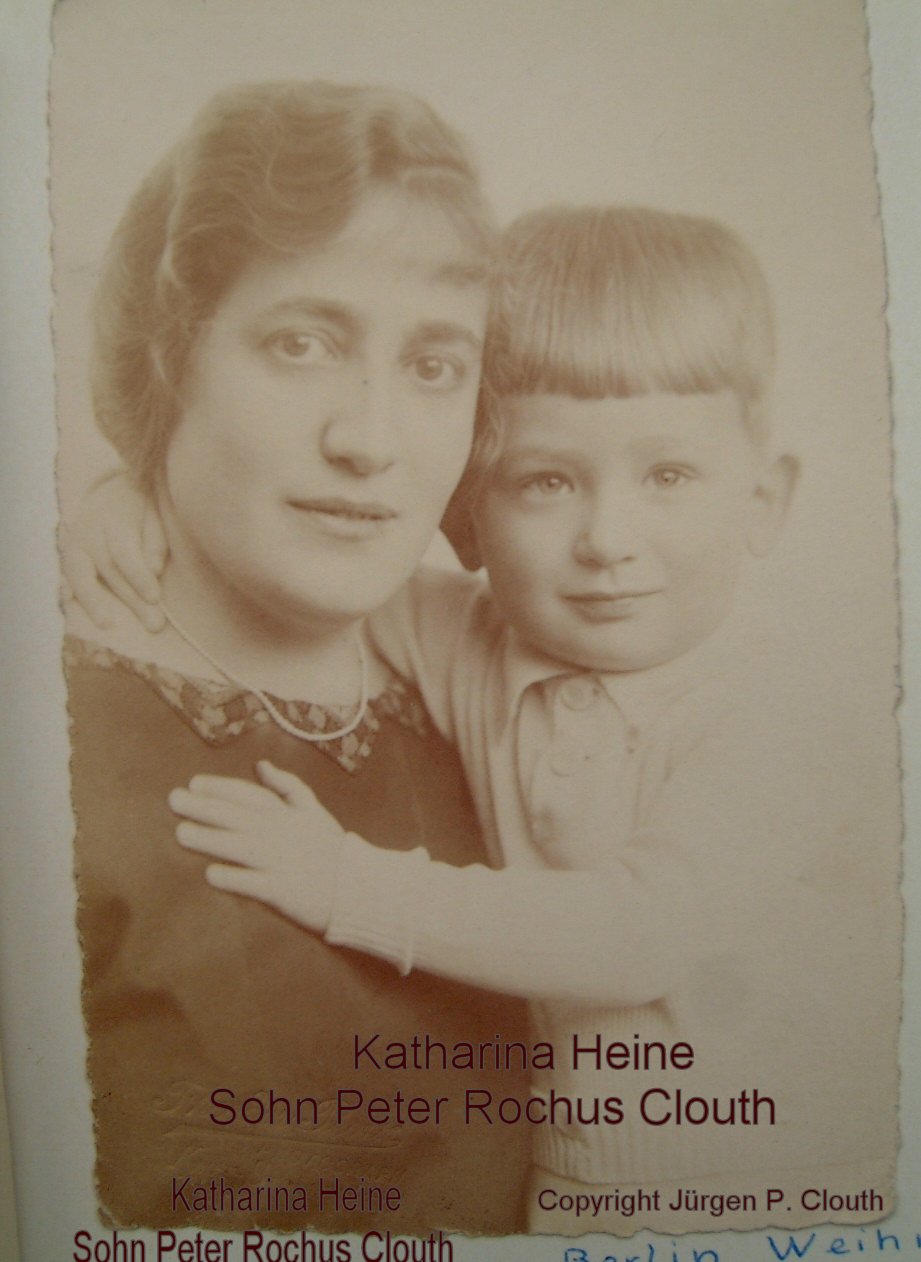
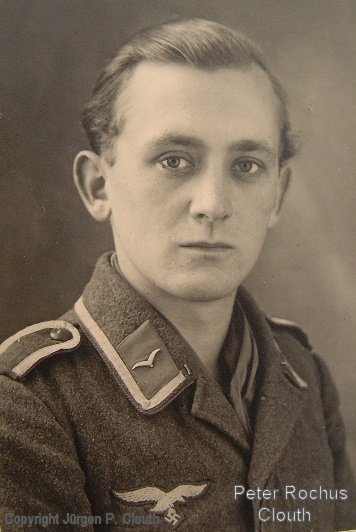
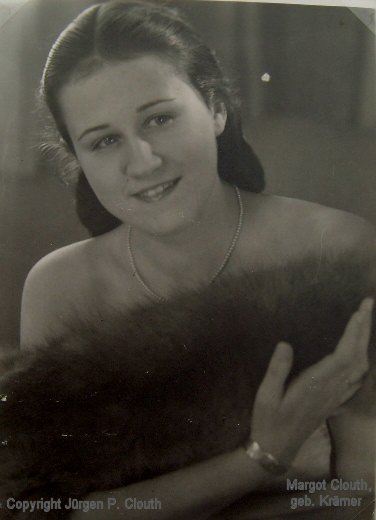


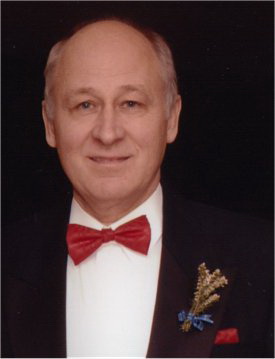
Rechtsanwalt J.P. Clouth
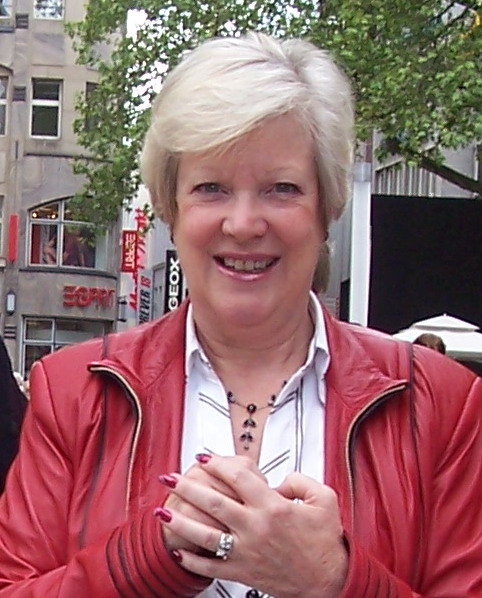
Ehefrau Audrey Clouth

Bryan, Oliver, Phillip
Clouth
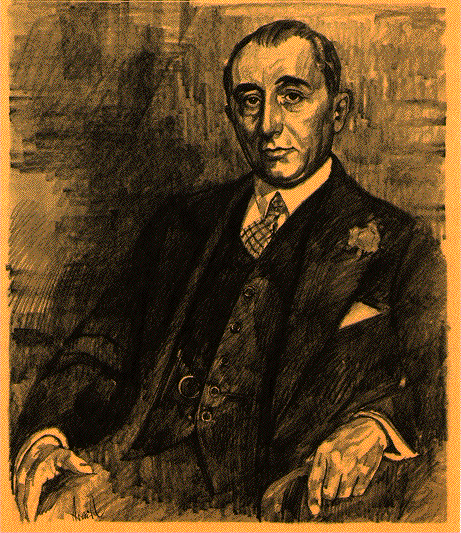
Max Clouth

Clouth Balloon Sirius
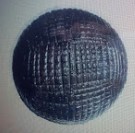
Kautschuk Golfball
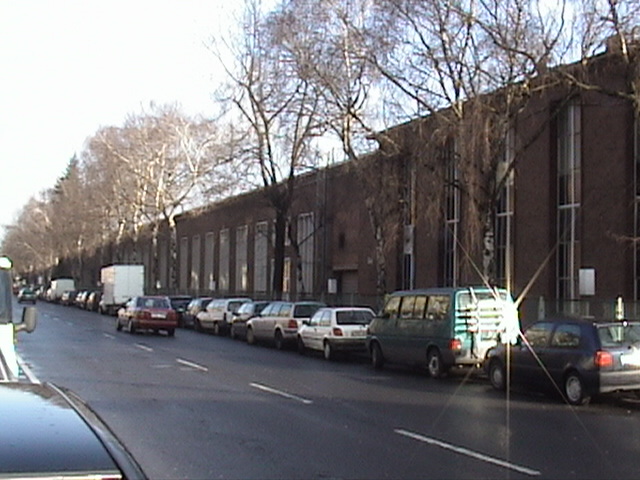
Clouth Factory Front

Younger Franz Clouth

Eugen Clouth
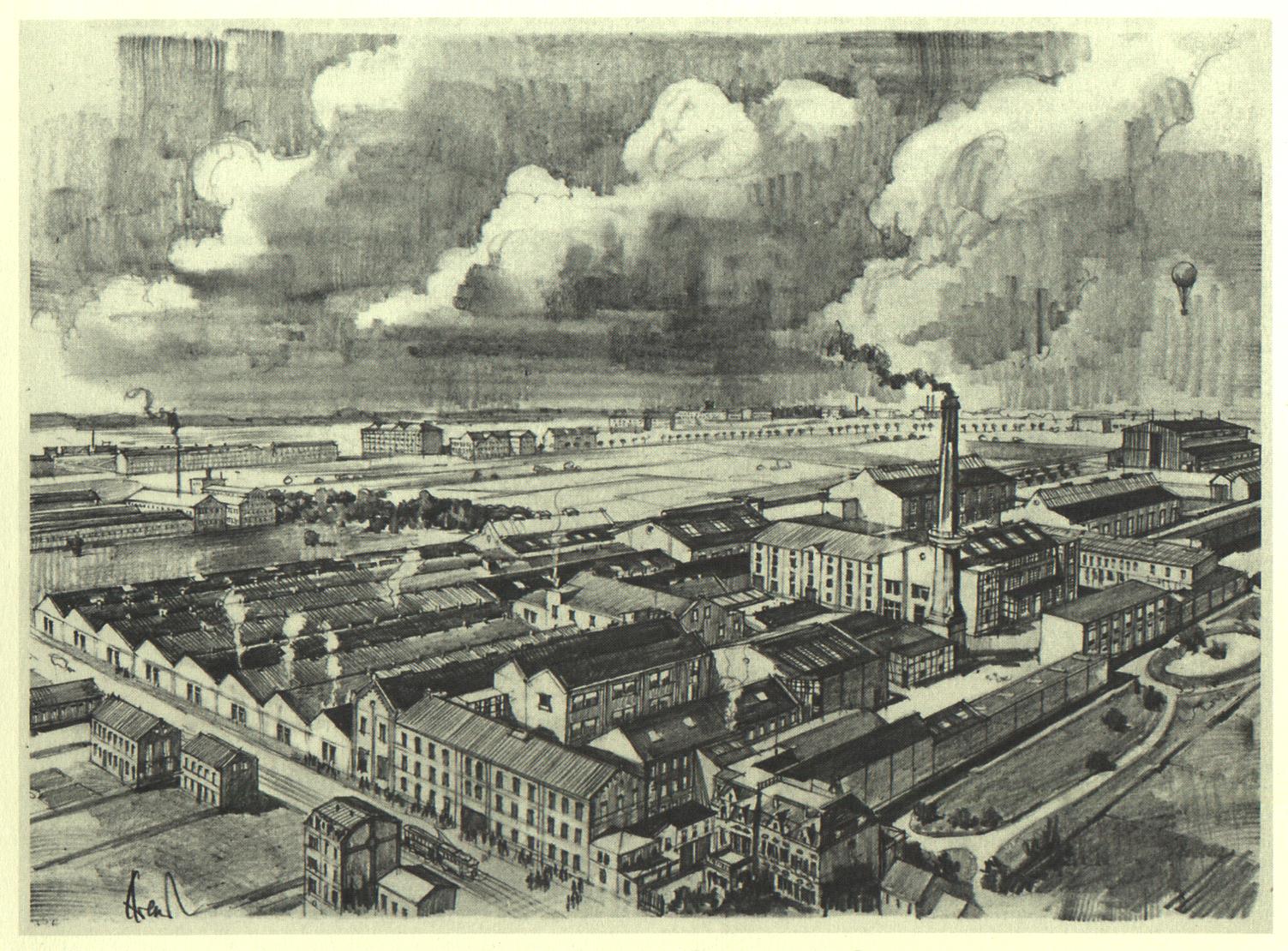
Clouth Factory

Air Ship Advert

Clouth Money
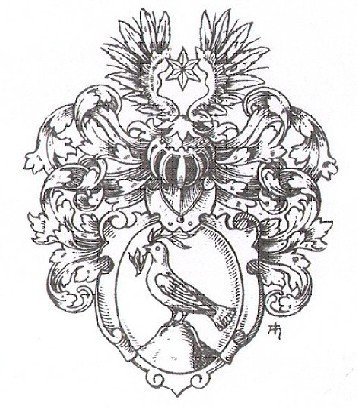
Old Clouth Crest
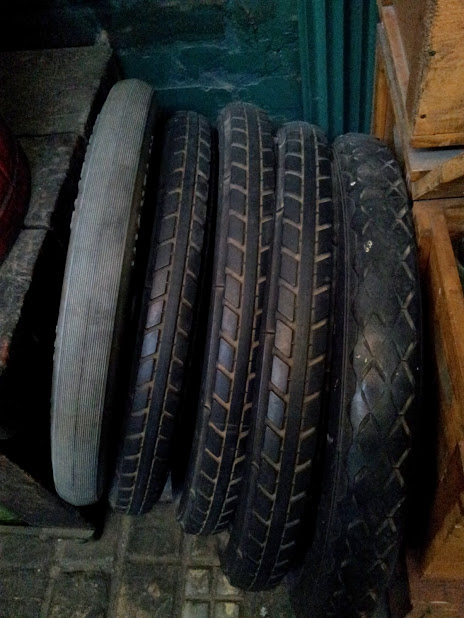
Car tyres
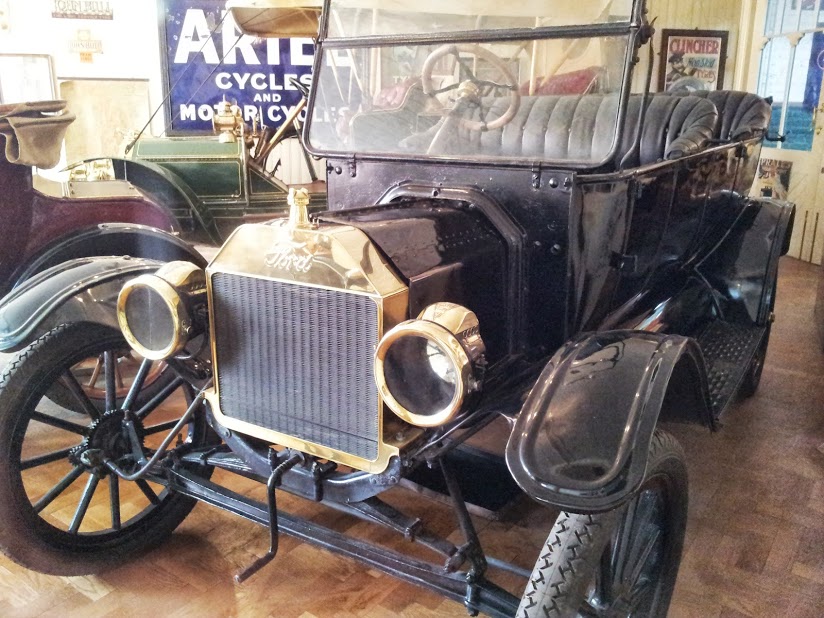
Old Car
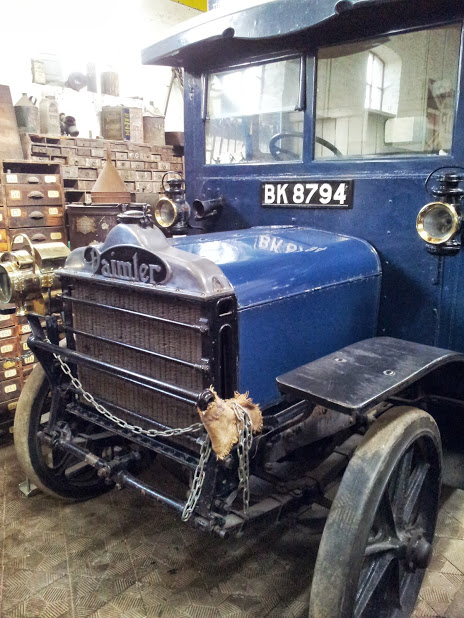
OLd Daimler

Excavator with conveyor
belt

Clouth VIII Balloon
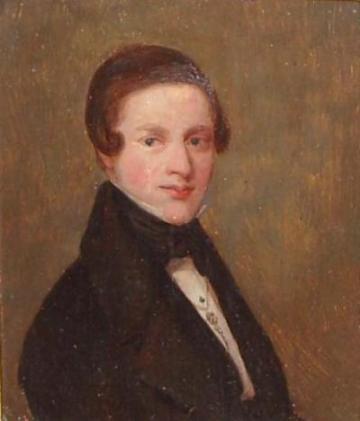
Wilhelm Clouth
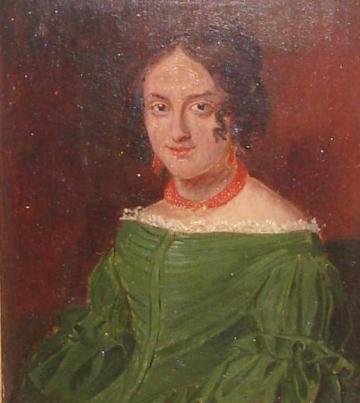
Katharina Clouth

Caoutchouc Golfball

Draft of Clouth Memorial
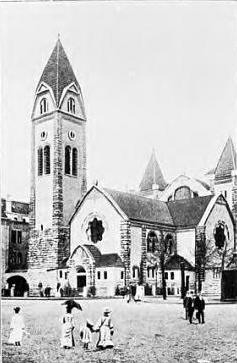
Old Catholic Church Köln

Cable Tower
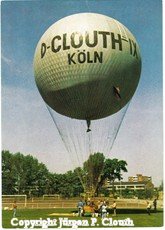
Clouth IX

Ticket for Clouth IX
Drive
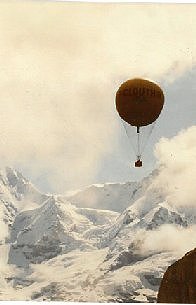
Clouth IX
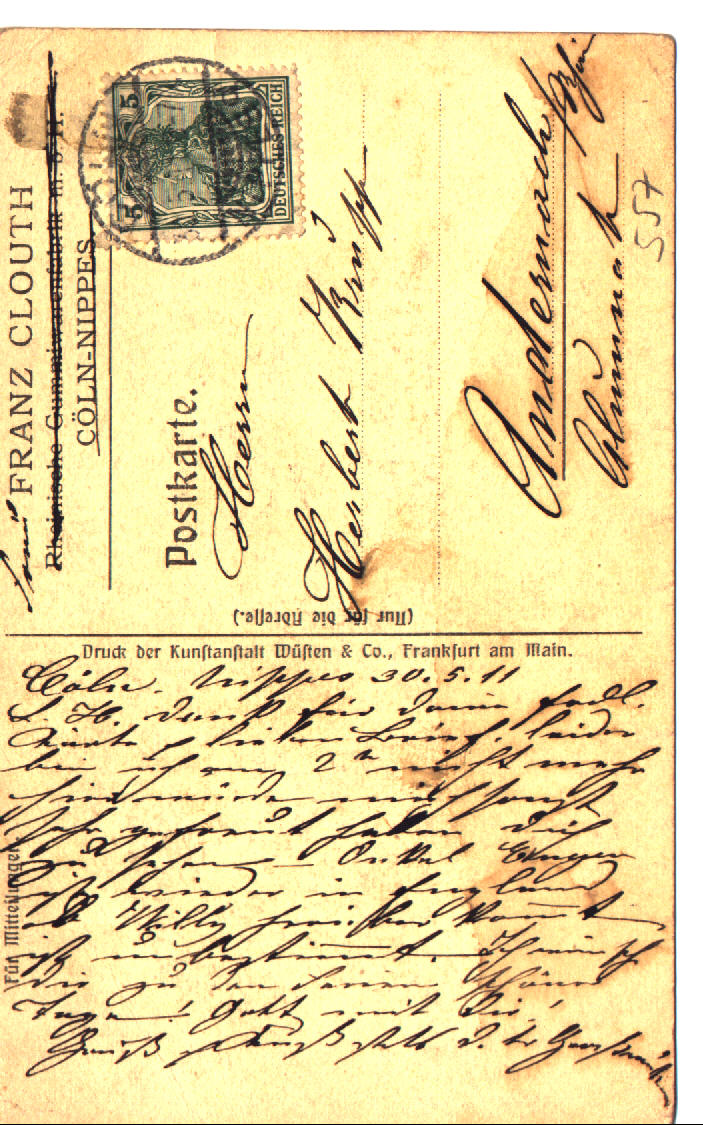

Clouth Buch 2.Edition
.jpg)
old Franz Clouth

Balloon Gondola
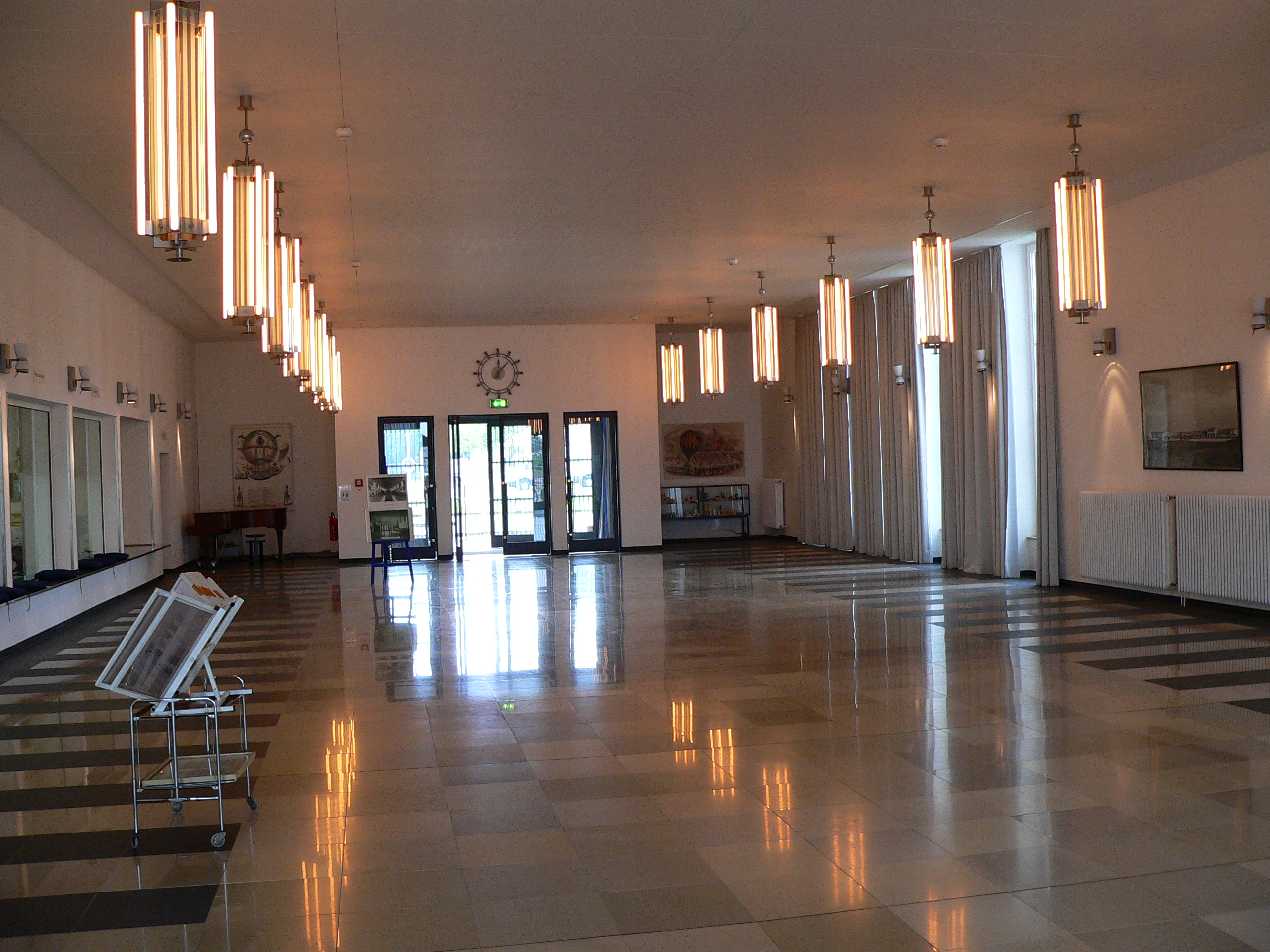
Butzweilerhof Airport
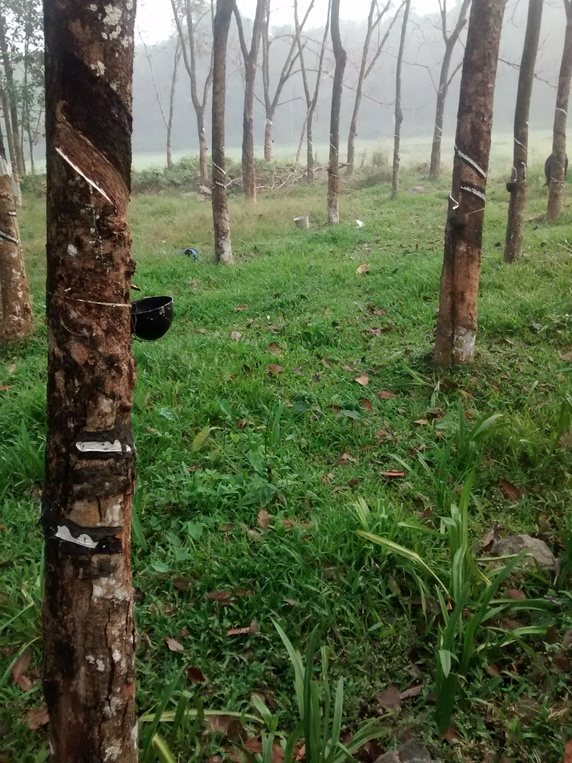
Caoutchouc-Tree
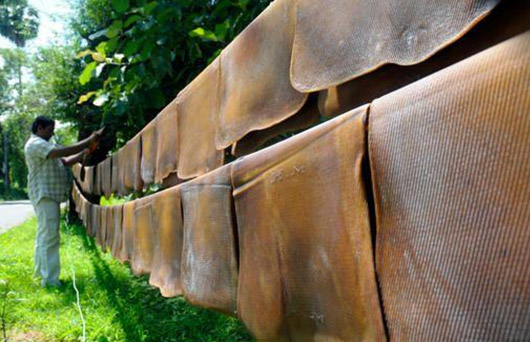
Caoutchouc Sheets
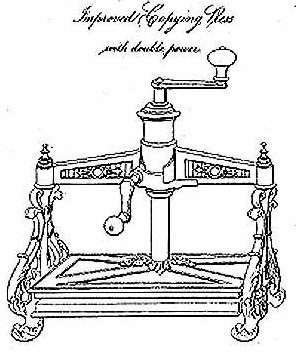
Caoutchouc-Copy Mashine

Water-Regulator
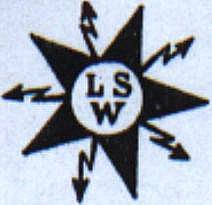
old Land & See Logo
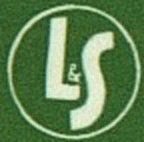
Land & See New logo
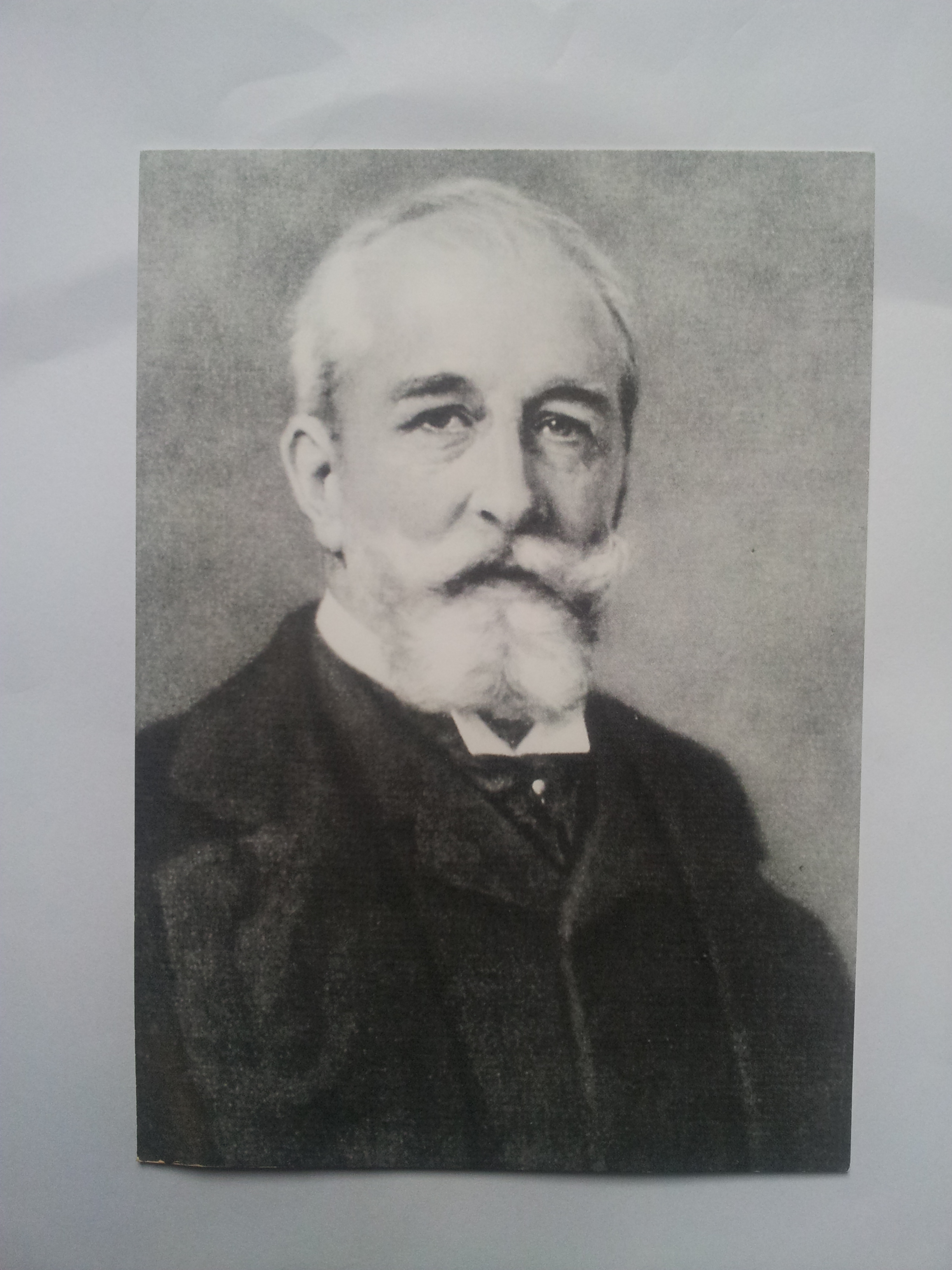
Franz Clouth

Richard Clouth

Industrieverein Altlogo


Conveyor Belt Hall

Gate 2 to Clouth Works

Atlantic Cable
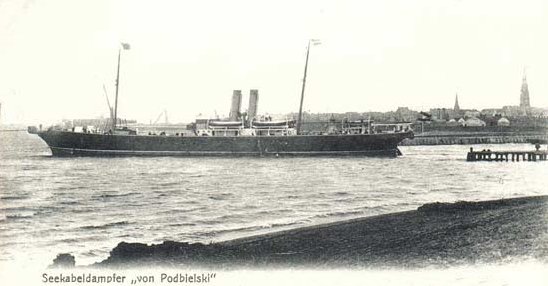
von Podbielski Cable
Layer
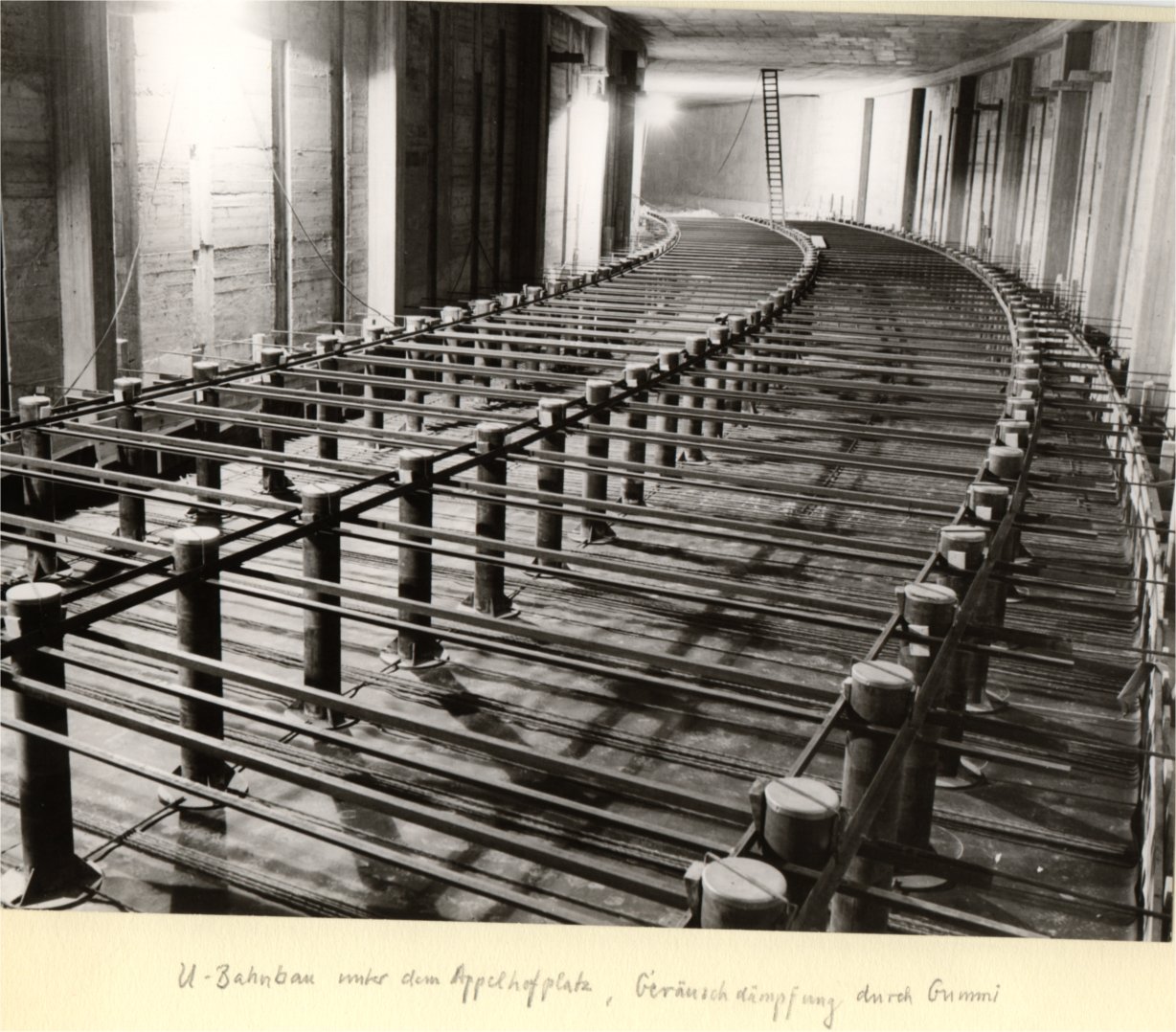
Sound Silencer "Clouth
Ei"(Egg)

Printery Wilhelm Clouth
| |

Works paintings around 1883
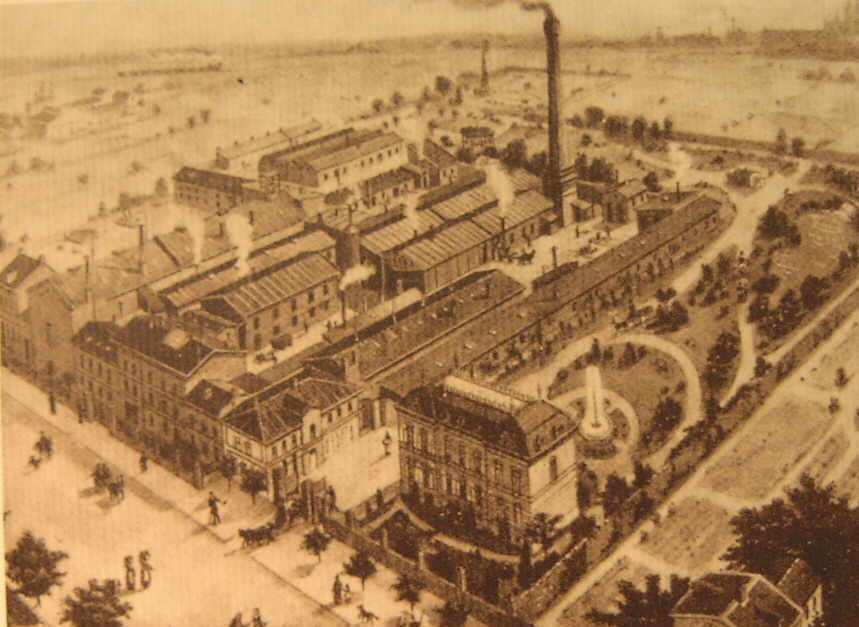
Clouth plant with
private pool Clouth front right and behind garden
The English and
Americans were the first in the Atlantic cable laying.
Germany came to the idea with the creation of own colonies,
Franz Clouth was already prepared
Land- und
Seekabelwerke AG
founded by Franz Clouth
The cable division,
which was legally separate from Clouth Gummiwerken, quickly
expanded into an area of 20,000 square meters with 600
employees due to the production process. On May 11, 1898, it
was outsourced to Land- und Seekabelwerke AG, which was
specifically founded for this purpose. Franz Clouth was
right at an early stage that the cable layouts in the
context of state and continental development would be
explosive and financially interesting. Why just for him?
Cable laying nationally and internationally found urgent
interest. Interestingly, the continents that come closer
together due to cable laying. The British and the Americans
were the first to enter the race because of colonial
questions and the possibility of intercontinental
communication. Partly because of cable breaks in the first
passages with high financial damages. The fact that all the
cables had to be well insulated, especially for years in
salt water, was decisive for Clouth. These conditions could
only be met by means of gutta-percha coats of the sea cables,
and Franz Clouth knew perfectly well. While simpler
conditions, as well as manageable conditions and risks in
the production and laying of land cables were given, the sea
cable laying, as in the attempts of the English and
Americans at the latest by 1866 became clear, was put at
risk. Legal advice can therefore only have contributed to
the decision to make the land and sea cables legally
independent. Risks could therefore be limited to this
company.

In the year 1901, the
main company was transformed into a limited liability
company (Rheinische Gummiwarenfabrik Franz Clouth GmbH), and
therefore had nothing to do with liability issues with sea
cable production and cable laying. Owners remained Franz
Clouth and son Max.
Land and Seekabel AG was already able to catch up with a
spectacular order with the laying of the first sea cable
from Emden to New York. This project, which was carried out
within the framework of the German-Atlantic Telegraph
Society, was put into operation on 1 September 1900. Another
order was the laying of cables 1898 in St. Petersburg, which
were only replaced in 2001. The installation of an
underwater cable between Wangerooge and the lighthouse
Rotersand and the wiring of the North Sea Canal can also be
seen. The capital requirements of the maritime cable works
were so large that the leading Cologne and Berlin banks
(Bankhaus A. Levy & Co., Cologne, Dresdner Bank AG,
Diskonto-Gesellschaft, Privatbanken Bankhaus S. Bleichröder
and Born & Busse [2]) became a bank consortium Of 50 percent,
which they transferred 1901 to the Cologne cable
manufacturer Felten & Guilleaume. F & G took over from the
Clouth family the remaining 50 percent in 1904, so that the
land and sea cables no longer belonged to the Clouth family.
With the Podbielski cable ship, the Norddeutsche
Seekabelwerke 1904 laid an almost 8,000 km-long
communication cable from Borkum across the Azores to New
York.
(Today NSW =
Norddeutsche Seekabelwerke / subsidiary of General Cable
Corporation(USA))
150 Year transatlantic
cable
On
the occasion of the anniversary, Facebook and Microsoft will
put the first cable over the Atlantic, which will control
neither the telecoms nor the carriers, but the two internet
groups.In August 2016 the laying work for a new fiber optic
cable across the Atlantic began. With a transmission
capacity of 160 terabits per second, "Marea" is not only the
most powerful cable between Europe and the US, it is also
the first cable that is not controlled by telecoms or
carriers, but by Internet groups. Marea is a joint venture
between Facebook and Microsoft, the third one, the Spanish
Telefonica, is only involved through its subsidiary Telxius,
which is responsible for the transfer and operational
management of "Marea"
.
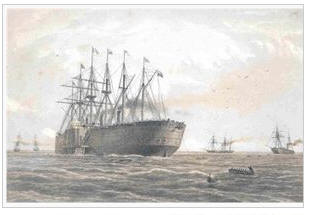

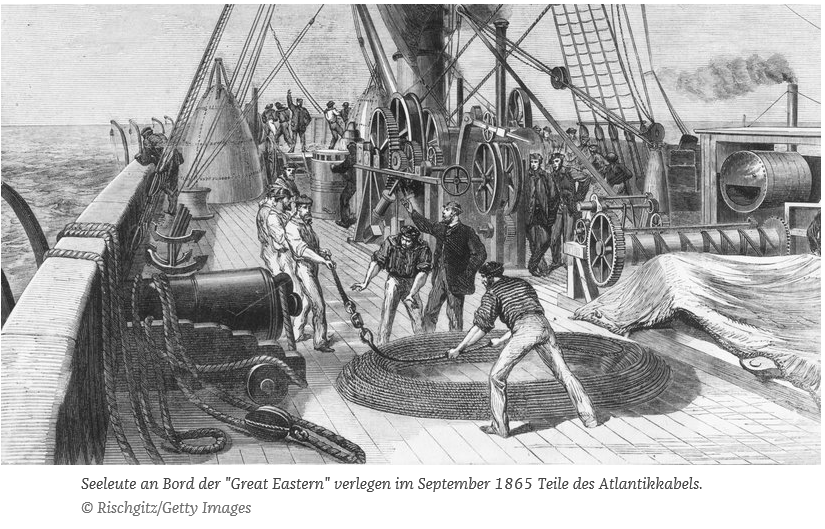
Cable
Layer
:"Great Eastern" (CC BY-SA 3.0 Wikimedia/Stacy)
Four steam engines propelled the paddle wheels of the Great
Eastern, the fifth the ship's screw. Together this resulted
in the 8,000 hp. Six sail masts were added. On Friday. July
13th, the Great Eastern, then the largest shipping ship
Valentia / Ireland, with 2,730 nautical miles of cables in
the cargo bay, left the ship at 2,730 nautical miles.
Fifteen days later, after cable laying of 1,852 miles on the
ocean floor, she anchored in Newfoundland / Trinity Bay and
brought the old one And the new world in terms of
telegraphic communication.
This new connection is shifted - coincidentally or not -
exactly 150 years after the first between the two continents,
as the first transatlantic cable went into operation in
1866. While the laying of a sea cable is today a routine and
is carried out by specialized ships, a converted passenger
steamer was used in 1866. The "Great Eastern", built in
Great Britain in 1854, was 211 meters long and was then one
of the largest steamboats ever. This first functional cable
ran along the shortest possible route between Newfoundland
and the southern tip of Ireland.
Longer cable, accelerated transport
The new
high-performance connection from Facebook and Microsoft from
Virginia Beach to Bilbao is unusual, because it is the only
one further south than all other cables between Europe and
the USA. With 6,600 kilometers it is also significantly
longer than all other connections, the copper cable laid in
1866 was only 3.400 km long. The theoretical signal
propagation times are almost the same in copper and glass
fibers, since the signals propagate approximately with light
velocity, copper cables are far more susceptible to
interference and have a higher attenuation. This results in
higher error rates, which can be corrected by error
correction protocols, but the transmission rate is naturally
braked.

Fight the latencies
The inevitable attenuation of the signal is compensated by
small amplifiers, which are located in distances of several
tens of kilometers in the cable itself. These amplifiers are
supplied with power via a thin copper tube, which
simultaneously serves to physically protect the glass fiber
bundles. The so-called neutral, ie the second pole, which is
necessary for the current flow, forms the salt water. The
copper tube is shielded from the penetration of water by
several insulating layers and braided protective sheaths.
The data stream is hardly braked by these optical amplifiers,
which have an extremely low current requirement, measurable
delays occur only during switching in the data centers. Even
if the switches are based on the same optical transmission
technology, there are latencies that add up with each of
these redirects.
In the copper cable of 1866 were not yet amplifiers, because
they were not yet invented. The signal propagation times
were then not the problem, but the readability of the
extremely weak signals. These first transmissions were as in
the decades afterwards coded as morse characters. The
overriding protocol for receipt acknowledgments or requests
for repetition was not used. The protocol may well have
resembled the Q-Code, which has been in use since 1909 in
various variants in civil aviation, at sea, radio amateurs
and military.Archaische Fehlerkorrekturen
Beginning with "Q",
the code for the British navy, which has been created for
the British navy, consists of three letters, which contain
radio or geographic information, but also provides feedback
on error correction and control commands. "QRV" as well as
the identification of the own station means for example "I
am ready to receive", without the own identification it is a
question to the other station. "QQ" is the noise component,
"QSL" is the acknowledgment of receipt, and so on. "QRO" is
denoted according to the same pattern "I increase the
transmit power" or is a prompt for "QSB".
"Point to Point"-Duplex, as usual
The metadata of the
analog communication have been exchanged, so to speak, by
the operators on both sides, so to speak. Due to the strong
attenuation of the signal, the cable was extremely noisy and
subjected to heavy fading. The transmission of a telegram in
Morse code could take several hours, including "error
correction". The exorbitant prices of $ 10 per word,
exorbitant at that time, ensured that only large
corporations and state institutions used transatlantic
telegram services during the first decades. In digital data
traffic, this task is done by machines, but technically and
structurally it is still the same duplex method as today for
the data exchange in the "point to point" traffic.
Strategy behind "Marea"
In the case
of "Marea", these two points are Bilbao in Spain and
Virginia Beach. In the same US state, Microsoft has been
building one of its largest modular data centers since 2010,
and the current investment volume in Boydton, VA is at least
$ 850 million. Facebook is also represented in Virginia with
a large data center on the east coast, in both cases they
act as "slaves" of the data centers on the west coast of the
USA, where both corporations have their headquarters. These
centers are therefore connected to Bilbao in Spain via only
two "hops", and the transmission protocols are under the
control of the two Internet groups on the entire, almost
7,000-kilometer-long data route.
From Bilbao, London is only a "hop" away, from there,
Microsoft currently handles most of its European data
traffic. In Bilbao, the world-wide fiber-optic network of
the Indian carrier Tata is also terminating. The point of
view in Northern Spain also shows that Facebook and
Microsoft are likely to set up large data centers in order
to link Southern Europe and the growth regions in North
Africa and the Middle East free from delays. Especially in
the latter regions, where comparatively weakly dimensioned
regional and local networks and correspondingly high
latencies are the rule, is the condition to handle real-time
services without dropouts or even timeouts.
Leviathan und die Weltkommunikation
The "Great Eastern"
was originally called "Leviathan" and was renamed after a
Kesselexplosion with several deaths. Already there had been
two dead in the run-up, the first owner and construction
manager of the ship, who had been a bankruptcy day after a
bankruptcy, and a sailor, when an anchor chain snapped. This
was followed by a series of accidents and a further collapse
because the cost of passenger traffic between the continents
exceeded revenues. Only then was the Great Eastern converted
to a cable car, which was to mark the beginning of the era
of world networking.
_____________________________________________________
A submarine cable (sometimes referred to
as an underwater cable) is a cable laid in a water body for data transmission or
transmission of electrical energy. Transmission cables are no longer suitable
for the transmission of conventional three-phase alternating current from a
length of approximately 70 km, but the more complex high-voltage direct current
transmission (HVDC) has to be used. They are usually moved by special ships,
so-called Kabelleger /Cable Layer.Sea cables have to be extremely robust due to
the technically complex maintenance. Monopolar marine cables for high-voltage DC
transmission must be marked on sea charts as they can considerably interfere
with ship compass systems (Wickipedia to sea cables)
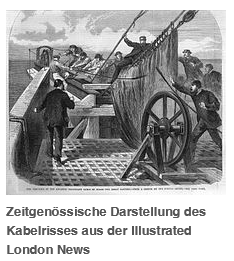 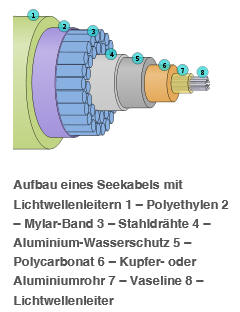 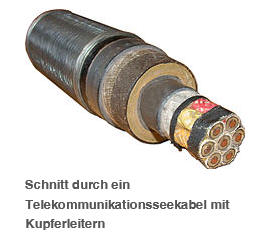
Submarine Cable
Deep-sea cables enable
data communication over long distances and can transport data volumes that are
larger than those of the strongest communication satellites. A further advantage
over satellite connections is the significantly shorter running time of the
signals. However, they share a great disadvantage with satellites: as well as
satellites, it is only possible to modify, maintain, extend, or otherwise work
in some way in the future.Above all because of the high data volume, deep se
cables are used particularly frequently in the Atlantic between North America
and Europe. There are only a few countries which do not yet have a connection to
a high-performance message cable.
Initially analogue electrical signals were
transmitted. Meanwhile, strands of glass fiber cables lie on the seabed. A
fiber-optic cable contains several fiber pairs, while the TAT-14 laid in the
North Atlantic is four. Multiple data streams can flow at a time via a fiber
pair through the so-called "multiplexing". Latest fiber pairs can well transfer
a terabit data per second. The glass fiber cables are located in a copper tube,
which is poured out with a water-repellent composite. Around this copper tube
there is a tube made of aluminum for protection against the salt water, steel
cables and, depending on the strength of the protection, several layers of
plastic. At the same time, the copper tube serves as an electrical conductor in
order to supply the optical amplifiers, which are required in intervals (with
modern cables 50-80 km), which are looped into the cable. The seawater serves as
a return line for the operation of the amplifiers. The operating voltage reaches
the order of 10 kV. In front of the coasts, more armed cables are used because
of the rising sea floor and the associated risk of damage by ship anchors or
fish trawlers. However, even these arrangements do not always help. On February
28, 2012, a ship waiting for a mooring in the port of Mombasa capped a
subseekabel with its anchor and thus lamented a substantial part of the Internet
connection of East Africa.
As early
as 1811, the German Samuel Thomas von Soemmerring sent electrical
signals through a wire insulated with rubber, which had been laid at
Munich by the Isar. [2]
However, these early tests were mainly due to suitable insulation. Thus,
several methods have been tried for the idea of laying underwater cables
since the invention of electric telegraphs. However, the invention of
the gutta-percha press in 1847 by Werner Siemens made well-insulated
cables possible for underwater laying.
On 28 August 1850, between Dover and Cap Gris-Nez near Calais, the first
sea cable was laid, which, however, was interrupted by a fishing boat
with its nets the very next day after the transmission of a first
telegram. A year later, a submarine cable between Great Britain and
France was relocated. This proved itself and triggered the laying of
further sea cables - with not always long durability.
Attempts, however, such as the laying of a cable in the Mediterranean
between Algeria and Sardinia, initially failed due to insufficient
equipment. Thus, for example, a suitable cable brake was missing, with
which one could control the unrolling of the cable from the cable drum
even with large water depths. This was only available with Werner
Siemens' brake dynamometer.Da damals
das Versenden einer Nachricht von Amerika nach Großbritannien noch über
eine Woche dauerte, kam
Cyrus W. Field
auf die Idee, ein Kabel am Meeresgrund des Atlantiks zu verlegen.
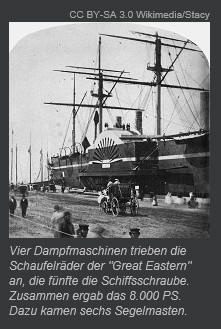 In
1856 the "Atlantic Telegraph Co." was founded to procure the necessary
funds from their sale of shares. There should be an over 4500 kilometer
cable from Ireland to Newfoundland. The ships used, Agamemnon and
Niagara, started on 3 August 1857 in Ireland, but after several
recoverable cable losses and breakages they had to give up after some
time after the final loss of the cable. In
1856 the "Atlantic Telegraph Co." was founded to procure the necessary
funds from their sale of shares. There should be an over 4500 kilometer
cable from Ireland to Newfoundland. The ships used, Agamemnon and
Niagara, started on 3 August 1857 in Ireland, but after several
recoverable cable losses and breakages they had to give up after some
time after the final loss of the cable.
After exercises in the Bay of Biscay in the spring of 1858, and another
haphazard attempt in June 1858, the enterprise succeeded in the third
attempt, which had begun on the 17th of July, after some difficulties,
and on the 5th of August the connection was established. On August 16,
1858, this first deep-sea cable between South West Ireland and
Newfoundland was put into operation with the exchange of congratulatory
programs between Queen Victoria and the American President James
Buchanan. The initial attraction, however, developed into a big
bankruptcy because the transmission of the greeting of the British Queen
to the American president lasted 16 hours, although it involved only 103
words. In September 1858 the cable failed; Presumably the gutta-percha
coating had been damaged during laying, which meant that the cable was
no longer adequately protected from corrosion by the seawater. The
problem was that at that time the topography and character of the seabed
were hardly known.
In 1864, a 5100-kilometer-long sea
cable with improved protective cover was prepared and the "Great
Eastern" was procured as the ship of the ship, then the largest line
boat in the world. On July 31, 1865, the cable was torn when laying. It
was not until 1866 that the first cable could be relocated, which in the
long term ensured the telegraph connection between America and Europe.
A few years later, the British
succeeded in reaching both the US by sea cable and the African continent
via Freetown in Sierra Leone. Another submarine cable ran through
Freetown to Cape Town.Egypt became an important relay station for sea
cable telegraphy. In 1868, a sea cable was moved from the island of
Malta to Alexandria in Egypt. From 1870 this part indirectly connected
London with Bombay.The high resistances of these long cables weakened
the signal very much, the incoming signal had to be evaluated by means
of mirror galvanometer. Other applications than telegraphy were not
feasible.In 1884, the International Treaty for the Protection of the
Undersea Telegraph Cable was concluded. [3] [4]In 1911, the telegraph
pioneer Adolf Slaby explained the significance of the submarine cables
for the secret transmission of messages, as opposed to the colonial
committee of the colonial committee:„The
most important and interesting does not penetrate the public immediately.
The importance which the navy attaches to the radio telegraphy today has
prompted the inventors to continually incite further progress. But the
results and the means by which this is achieved are no longer published,
but kept secret. It should be remembered that, in the navy, wireless
telegrams are transmitted not only to a squadron, but to fleets, which
are 1000 or more miles distant, that these telegrams are looking for a
route which is simply prescribed by the telegraph and which do not
disturb each other .
Telephone cable

From
1950 sea cables with spliced amplifiers for
the transmission of telephony signals became
possible. The amplifiers were supplied with
high voltage via the inner conductor of the
cable, the return was the sea. In 1956, the
first transatlantic telephone cable was
relocated.The sheath of the glass fiber
cable is made of polyethylene, the lilac
layer is made of Mylar tape followed by
steel wires, a layer of aluminum (4) for
protection against water and polycarbonate
(5). A copper or aluminum tube serves as a
conductor for the power supply (7), the
glass fiber bundles embedded in a jacket of
vaseline lie in the innermost part.



The sea cables
of the time were
quite similar to
the ones
currently used
in layers,
although the
material used
was archaic.
Instead of
polyethylene and
mylar,
rubber-like
materials such
as gutta-percha
were used.
Norddeutsche Seekabelwerke
GmbH & Co. KG
von http://www.albert-gieseler.de/dampf_de/firmen5/firmadet54132.shtml
|
Firmenname /firms name |
Norddeutsche Seekabelwerke GmbH & Co. KG |
|
Ortssitz / Location |
Nordenham (Unterweser) |
|
Road |
Kabelstr. 9-11 |
|
Postleitzahl
/postal code |
26954 |
|
Art des Unternehmens |
Seekabelwerke |
|
Anmerkungen /remarks |
Zunächst zu Felten & Guilleaume, dann Siemens, dann
Corning. Um 1943/1955: "Norddeutsche Seekabelwerke
Aktiengesellschaft" |
|
Quellenangaben /Sources |
Firmenchroniken [Kunert: Telegraphen-Seekabel (1962) 59]
[ABC d dt. Wirtschaft (1955) II/676] [Handbuch Akt.-Ges.
(1943) 5911] |
|
Zeit /Time |
Ereignis /results |
|
1898 |
Around 1898 the Felten & Guilleaume
Carlswerk AG and the Land- und
Seekabelwerke AG., a foundation of Franz
Clouth, independently of each other
planned each a separate production of
sea cable on the German coast. |
|
11.05.1898 |
When the German plans to create a German
overseas cable network to meet their
demands was realized, Franz Clouth at
first founded the Land- und
Seekabelwerke AG in Cologne-Nippes. But
this cable production was located in the
interior of Germany, the transport of
longer sea cables to the landing points
on the German coast or overseas was
time-consuming, cumbersome and expensive.
None of the German works works at that
time were capable of laying out long
cables by means of their own cable
steamers. A remedy is only possible by
constructing a new cable plant at a
suitable place on the German sea coast,
where the finished cables could be
directly loaded from the storage tanks (cable
tanks) of the plant into the cable
steamers. That is, why the idea with
Nordenham came up |
|
28.09.1898 till 23.12.1898 |
The Land- und
Seekabelwerke AG. negotiated with the
Oldenburg government about the existing
problem, they concluded with it on 28
September and 16/23.December 1898
contracts for the construction of a
cable factory at Nordenham |
|
23.10.1898 |
On
23 October 1898, the land and sea cable
works ordered a cable dumper at the
shipyard David J. Dunlop & Co. in Port
Glasgow (England), since the German
shipyards did not accept the delivery of
such a steamer in the required period of
12 months want. |
|
01.11.1898 till 31.12.1898 |
Land- und Seekabelwerke AG acquired a
suitable 13 hectare site on the left
bank of the river Weser in Nordenham. It
was located not far from Bremerhaven,
and the Weser could be used in all
weather conditions, even in frost, by
larger seagoing vessels. Clouth began
the construction work and ordered a
cable dumper in England. Since two
submarine cable factories could not be
sufficiently engaged, the parties agreed
on the suggestion of the Reichspostamt:
A new joint-stock company Norddeutsche
Seekabelwerke was founded, whose shares
Felten & Guilleaume and the
German-Atlantic telegraph company took
over. The land and sea cable works
received enjoyment certificates with
limited dividend entitlement as a
distance. The Norddeutsche Seekabelwerke
AG. acquired the facilities in Nordenham
as well as the cable steamers and
completes the expansion of the cable
factory. |
|
1899 |
J.
Engler found employment with the
Norddeutsche Seekabelwerken, still in
its Cologne administration. He remained
connected to the work of his life. He
began his career as a laying engineer
and, as such, was involved in the
expeditions and large expeditions in
Southeast Asia, in the North and South
Atlantic, initially under the direction
of Englishman Mr. Henry Blighforde. |
|
01.1899 |
The land and sea cable works already
began to raise the terrain, fix the bank
bridge, erect a pier in the river to
which the steamers will later be laid,
and erect some factory buildings |
|
Start of 1899 |
At
the beginning of 1899, a contract was
signed with the Grand Duke's railway
management in Oldenburg for the
connection of the factories to the
railroad tracks, etc., and the
construction of the connecting line was
undertaken. |
|
27.05.1899 |
Foundation of Norddeutsche Seekabelwerke
Aktiengesellschaft (NSW) with a capital
of 2,000,000 marks in Cologne by Felten
& Guilleaume Carlswerk AG (F & G) and
the German Atlantic Telegraph Company
(DAT) |
|
27.05.1899 |
The Norddeutsche Seekabelwerke founed in
Cologne/ Cöln |
|
20.06.1899 |
Registration in the commercial
register: According to § 3 of the
Articles of Association, the company's
duty is:(A) the manufacture of
electrical cables and accessories, in
particular those cables used for the
production of overseas connections (sea
cables);(B) the taking over of work for
the laying of cables of the kind
referred to in (a) and for the repair of
such cables;(C) the purchase and sale of
materials and products directly or
indirectly involved in the activities
referred to in (a) and (b) and the
execution of all other related
transactions. -The share capital of 2
million Marks is characterized by Felten
& Guilleaume Carlswerk AG and the
German-Atlantic Telegraph Company each
in half |
|
20.06.1899 |
On
June 20, 1899 the Norddeutsche
Seekabelwerke AG took over. (NSW)
installed the "Kabeldampfer" (cable
layer steamboat)and the facilities in
Nordenham, for which Land- und
Seekabelwerke AG. (L & S) until then.
672 420 Mark had used. |
|
08.1899 |
In
August 1899, the following contract was
concluded between Felten & Guilleaume
and the German Atlantic Telegraph
Society: NSW enters into all agreements
concluded up to that time, accepts the
employed officials, commits itself to
reimbursement of the expenses so far, to
pay a remuneration of 30,000 Mark for
general expenses, etc., and grants the L
& S beneficiaries according to the
number of shares issued which qualify
for 1/3 of the dividends exceeding 5
percent of the share capital (see § 8
and § 31 of the company agreement). |
|
14.10.1899 |
The agreements of the August agreement
are concluded in a contract between
Felten & Guilleaume (F & G), Land- und
Seekabelwerke AG. (L & S), the
German-Atlantic Telegraph Company (DAT)
and the Norddeutsche Seekabelwerke AG. (NSW)
confirms that F & G and DAT will take
over half of any capital increases and
retain their share capital for a period
of 15 years from June 15, 1899; The
transfer of the shares is subject to the
approval of the General Meeting during
this period pursuant to Article 4 (3) of
the Articles of Association. F & G, L &
S and DAT do not establish or
participate in any of these companies
for the production of maritime cables
linking two coastal zones whose distance
from each other exceeds 200 km in the
air line during the same period. F & G
and L & S do not produce such sea cables
during the same period. NSW, on the
other hand, will only make land cables
during the next five years, from June
15, 1899,
(A) in the case of land cables following
a submarine cable for its introduction
into the cable house or to the telegraph
station, the execution of which is
carried out by NSW; (B) in the case of
contracts awarded by F & G or L & S to
NSW. |
|
09.11.1899 |
Launch of Podbielski's steam booster at
the Dunlop shipyard in Glasgow |
|
1900-1902 |
Construction and first expansion of the
plant and residential housing colony (cable
colony) in Nordenham |
|
Start of 1900 |
At
the beginning of 1900 the cable and vein
factory was built |
|
1900 |
Increase of company capital by M
2,000,000.00 to 4 million marks |
|
03.02.1900 |
Commissioning of the Podbielski cable
steamers (named after the Secretary of
State in the Ministry of Posts).
Specifications: Overall length 77.2 m,
Maximum width: 10.67 m, Total loading
capacity: 1320 t, Cable loading: 980 t,
Draft loaded: 5.03 m, Machine power:
1600 hp, Speed: 13 nm / h |
|
10.08.1900 |
The Norddeutsche Seekabelwerke erect a
branch office in Nordenham |
|
10.08.1900 |
The branch of Norddeutscher
Seekabelwerke in Nordenham is being
built. |
|
11.09.1900 |
Director Diederichs assumes the
leadership of the Norddeutsche
Seekabelwerke from the land and sea
cable works |
|
01.10.1900 |
The maritime cable factory starts
operation. First, only telegraphic
submarines were produced there |
|
Herbst 1900 |
The first cable delivery is a supply
cable for the German-Atlantic telegraph
company in the autumn of 1900 |
|
Ende 1900 |
The end of the first cable delivery is
the end of 1900 for the production of
the four-core cable Borkum - Bacton III. |
|
05.-18.12.1900 |
The first work of the steam boiler "von
Podbielski" is the laying of a cable
manufactured by Felten & Guilleaume at
the Carlswerk in Tsingtau-Shanghai in
the period from 5th to 18th December
1900. |
|
01.04.1901 |
The Norddeutsche Seekabelwerke move
their business from Cologne to
Nordenham. [Also known as 1908] |
|
1902 |
Schütte took over the construction
supervision of the first German
steamship "von Podbielski" on a
Glasgower shipyard [already started in
1899!] As well as the design and
supervision of the two following
Kabeldampfer "Stephan" in Szczecin and
"Großherzog von Oldenburg" in Elbing. |
|
1902 |
There is a new workshop building, a
warehouse tankard and a new large
tankard, gutta-perchakeller,
impregnation and storage building. |
|
30.06.1902 |
Increase of company capital by M
2,000,000.00 to 6 million marks |
|
29.12.1902 |
Launch of the steamer "Stephan" (named
after the general postmaster). The
vessel is 115.82 m long, 14.63 m wide,
has 7.49 m draft, 6050 t load capacity,
of which 4500 t for cables. The engine
power is 2400 hp, the speed 11.5 sm / h |
|
Spring 1903 |
The steamer steamer "Stephan" will be
put into service in spring |
|
1904 |
The first large gutta-percha-insulated
telegraph cable from NSW was built and
laid by the own cable ships "of
Podbielski" and "Stephan" Borkum Azores
- New York (7.993 km) |
|
1905 |
The factories are expanded again. |
|
06.1905 |
The cable steamer "of Podbielski" is
sold to the Dutch government for
Dutch-India. He is given the name "Telegraaf" |
|
15.11.1905 till 19.11.1905 |
The sea cable Makassar-Balikpapan is
delivered and laid by the Norddeutsche
Seekabelwerke, as a feeder for the
German-Dutch cable network in the
Pacific Ocean. |
|
1906 |
Construction of the administrative
building in Nordenham |
|
23.02.1906 |
The Electrical Review, London, brings an
essay in which, among other things, is
performed:"We are afraid that some of
our cable manufacturers will take things
easy and to neglect to keep up their
machines and ships on the heights of
electric motors that drive all Nordenham
cable machines from X - ray devices for
testing wires and solder joints,
Electrical welding of the protective
wires, etc., and is affected by the
difference between these modern methods
and the facilities of some of our cable
works, and the difference is even more
pronounced in ships Admirable work, can
hardly be characterized as standing on
the level of efficiency .... |
|
End January 1907 |
The administrative building is occupied |
|
1908 |
A
cable test building is added |
|
14.04.1908 |
Relocation of the company headquarters
from Cologne to Nordenham |
|
1909 |
The contract of 14.10.1899 is extended
already in 1909 beyond the year 1914
indefinitely with six months' notice. |
|
05.03.1911 |
According to the French magazine "Révue
Générale", the French magazine "Révue
Générale" writes: "The competition of
the English companies, the political
conditions, the technical difficulties
in the laying of 11,000 km of cables
make the success a unique one
Seekabelwerke was already undoubtedly
established .... " |
|
1912 |
Since 1912, also telephone cables are
manufactured, both with Guttaperpercha
coatings |
|
03.1912 |
An
electric power generation unit of 1000
hp is put into operation |
|
27.05.1913 till 03.06.1913 |
The North - German sea cable works
supply and lay the Panama cable cable to
Santa Elena. |
|
01.11.1913 till 31.12.1913 |
The soaring cable Soerabaja-Balikpapan
and Kema-Ternate will be opened in Nov.
/ Dec. From the Norddeutsche
Seekabelwerken delivered and laid. |
|
10.03.1918 |
Death of the cable engineer Giessen (since
1903 in the company) |
|
12.03.1920 |
Ludwig Schneidt and Ewald Dreyling are
appointed deputy members of the
Management Board |
|
1921 |
Takeover of the shares of the German
Atlantic Telegraph Company by F & G |
|
19.05.1922 |
Increase of corporate capital during the
currency decline m Mark 18,000,000.00 to
24 million paper mark |
|
1924 |
Conversion of capital from M
24,000,000.00 to RM 2,400,000.00 |
|
02.12.1924 |
J.
Engler becomes deputy member of the
board of the Norddeutsche Seekabelwerke |
|
16.01.1925 |
Director Julius Engler becomes deputy of
the director Diederichs and Felix Maria
Connemanns |
|
1925 |
Diederichs is responsible for the
management of Norddeutsche Seekabelwerke
AG |
|
01.01.1926 |
After the departure of the director
Diederichs director Felix Maria
Connemann takes over the direction of
the work. |
|
928 |
Since the end of 1928, telephone cables
with lead cord are also manufactured |
|
1929 |
Production of paper-insulated
lead-coated telephone land cables |
|
01.04.1931 |
Felten & Guilleaume Carlswerk AG and
Siemens & Halske AG agree to unite their
maritime cables in the Nordenhamer cable
network; The equity capital of NSW will
be split between F & G and S & H on half
of that date. |
|
1932-1935 |
Development of Styroflex * polystyrene
electro-insulating film and Styroflex
factory set-up Introduction of plastics
extrusion technology and thus start of
NSW plastic technology |
|
21.03.1932 |
Ludwig Schneidt and Ewald Dreyling leave
the board |
|
1938 |
Since the start of operation until 1938,
66,000 km of sea cables were delivered
to the country and abroad, and most of
them were laid with their steamers. |
|
10.07.1942 |
By
resolution of the Supervisory Board of
July 10, 1942 Capital adjustment
according to DAV of 12 June 1941 by 50%
from RM 2,400,000.00 to RM 3,600,000.00
with effect from December 31, 1941. The
amounts necessary for the correction are
obtained From investments with RM
626,698.00 and other balance sheet items
with RM 783.302.00. |
|
16.09.1942 |
Julius Engler becomes a full member of
the Executive Board, Maximilian Greis
and Heinz Horn are appointed deputy
members. |
|
17.08.1943 |
Last Annual General Meeting until
1943/44 |
|
01.01.1944 |
Heinz Horn retires as a deputy member of
the Management Board and is replaced by
Bernhard Boos. |
|
01.08.1944 |
Walter Fuhr becomes deputy member of the
Management Board |
|
05.08.1945 |
Board of Directors Mr Greis separates |
|
1947 |
Production of plastic-insulated
wirewound wires for underwater motors |
|
04.07.1947 |
J.
Engler retires as a member of the board
of directors from the Norddeutsche
Seekabelwerken. |
|
04.07.1947 |
Bernhard Boos and Walter Fuhr become
full members of the Management Board |
|
20.08.1948 |
J.
Engler is appointed to the Supervisory
Board of the Norddeutsche Seekabelwerke |
|
1950 |
Development of Northylene, a
polyethylene (PE) film for packaging
purposes |
|
28.04.1950 |
J.
Engler is a member of the supervisory
board of Norddeutsche Seekabelwerke
until 28 April |
|
1951 |
Delivery and laying of the first NSW sea
cable after the Second World War. 50 km
PE-insulated telephone cable for
connection Sweden - Finland |
|
1957 |
Adjustment of the production of sea
cables without gutta-percha insulation |
|
1958-1959 |
Delivery of 1.855 km telephone cable
with PE insulation for the transatlantic
connection TAT 2 |
|
1959 |
Production of extruded knotted plastic
net, Poly-Net |
|
1960 |
Production of packaging films made of
polystyrene, Norflex |
|
1962 |
Flooding and severe damage to the
production plants due to a severe storm
surge |
|
1962 |
Manufacture and laying of ICECAM
telephone cable Norway - Greenland -
Canada (3.224 km) |
|
1963-1964 |
Construction of the production
facilities for Light-Weight Seekabel (LWC) |
|
1965 |
Delivery of 2,223 km of LWC cable for
the transatlantic link TAT 4. Under the
Comsat agreement no further German
commitment to transoceanic sea cables |
|
1968 |
Destruction of the wire and wire factory
as well as large parts of the sea cable
production by a large fire |
|
1968 |
Sale of the discontinued LWC
manufacturing plants to the Simplex Wire
& Cable Co., USA |
|
1968 |
The task of the transoceanic submarine
cable business after over 80,000 km of
cable since the company was founded |
|
1969 |
Restoration of the cable factory 2
destroyed by fire and recording of the
production |
|
1970 |
Construction of the Poly-Net-Fahrik
development |
|
1970 |
Production of marine measuring equipment |
|
1973 |
New construction of the cable factory 1
for telecommunication cables |
|
1977 |
Adjustment of the manufacture of
telecommunication cables with paper
insulation |
|
1978 |
Introduction to environmental technology
Development of methods for the treatment
of groundwater and waste water |
|
1979 |
Recording the production of plastic
belts for conveyor technology |
|
1979 |
Take over the lighting company
Cristallux in Waldachtal |
|
1980 |
Foundation of NSW Offshore Ltd. In
Aberdeen, for the distribution of
special cables for the offshore industry |
|
1981 |
Foundation of NSW Corporation in Roanoke,
VA, USA Production and distribution of
NSW plastic products and NSW
environmental technology |
|
1981 |
Renaming Felten & Guilleaume Carlswerk
AG (F & G) in Philips Communications
Industry AG (PKI) |
|
1988 |
Transformation of NSW Offshore Ltd. In
Aberdeen in "NSW Technology Ltd."
(Distribution of special cables for the
offshore industry) |
|
1988 |
Cristallux for sale |
|
1989 |
New start of the submarine cable
business - now with fiber optic cables (LWL)
message desks |
|
1992 |
Adjustment of equipment for marine
measurement |
|
1994 |
Supply of 288 km fiber optic cable for
the connection Latvia - Sweden; At the
time largest regenerator-free length |
|
01.10.1995 |
Takeover of the NSW share package held
by PKI (Philips) by Siemens AG on 1
October 1995 |
|
1996 |
Conversion of NSW AG into NSW GmbH |
|
1996 |
Certification of the business line cable
according to DIN ISO 9001 |
|
1996 |
Reorientation of NSW as a competence
center for armored fiber optic cables in
the Siemens Group |
|
1996-1998 |
Delivery of more than 6,000 km of fiber
optic cable to Siemens AG for the
projects Nigeria, Kolunthia, Cap Verde,
Philippines and Azores in the years 1996
- 1998 |
|
1997 |
Modernization and specialization of the
cable factory for the production of
submarine cables and fiber optic cable |
|
1997 |
Adjustment of Styroflex production |
|
1998-1999 |
At
the beginning of fiscal year 1998199,
NSW's sea cable activities will be
carried out entirely by NSW, thus NSW
will take over all business functions
worldwide, including development, sales,
projecting, manufacturing, laying,
maintenance and repair of submarine
cables |
|
|
Bezeichnung /Name |
Bauzeit |
Hersteller /Fabrication |
|
Lokomobile |
1899-1903 |
Heinrich Lanz Aktiengesellschaft |
|
Schiffsdampfmaschine
/Ships steam mashine |
1902/03 |
Stettiner
Maschinenbau-Aktiengesellschaft Vulcan |
Personal
|
Zeit/time |
gesamt/ total |
Arbeiter
/workers |
Angest./employees |
Lehrl./apprentices |
Kommentar /Comment |
|
1950 |
229 |
|
|
|
am
1.1. |
In General
|
ZEIT /TIME |
1943 |
|
THEMA /THEME |
Organs and capital of society |
|
TEXT |
Board: Julius Engler, Nordenham; Dr.
Maximilian Greis, Nordenham,
stellvertretend; Heinrich Hörn,
Nordenham, Deputy Supervisory Board:
Director GeneralFritz
Lehmann, Köln-Mülheim, Chairman;
Director Dr. Erich Thürmel,
Berlin-Siemensstadt, Deputy Chairman;
Direktor Felix M. Connemann, Bremen;
Ministerial-Dir. a. D. Geh. Oberposrat
Dr. Peter Craemer, Bückeburg; Direktor
Theodor Frenzel, Berlin-Siemensstadt;
Dr. Fritz Luschen, Berlin-Siemensstadt;
Generaldirektor Dr. Aloys Meyer,
Luxemburg; Direktor Dr. Ulfilas Meyer,
Köln-Mülheim; Direktor Kurt Sontag,
Berlin. Profit and its use: According to
German Stock Corporation Act.:
registered capital: nom. RM
3.600.000,00 Common shares in 3600
editions each of RM 1.000,00. major
shareholders: Felten
& Guilleaume Carlswerk A.-G. in
Köln-Mülheim (50%), Siemens & Halske
A.-G. in Berlin (50 %). dividends:
1927-1939: 0%; 1940-1942: 6, 4*), 4 %;
*)To the adjusted capital. |
|
QUELLE /SOURCE |
[ Handbook: Handbuch Akt.-Ges. (1943) 5911] |
|
|
|
THEMA /Theme |
Purpose and object of the company (corporate
bodies and capital of the company) |
|
TEXT |
Purpose: Manufacture of electrical
cables and accessories, including cables
used for the production of overseas
connections (sea cables); Taking over
work for the laying and repair of cables
of the intended type and other
utilization of own and available
vehicles; Manufacture of insulation and
similar materials, and of manufacture
therefrom. The factory of the company in
Nordenham came into operation in the
autumn of 1900. The workshops are
variously expanded.
(Board: Julius Engler, Nordenham; Dr.
Maximilian Greis, Nordenham,
deputy; Heinrich Hörn,
Nordenham, vicarious.
General Board: Generaldirektor Fritz
Lehmann, Köln-Mülheim, Vorsitzer;
Direktor Dr. Erich Thürmel,
Berlin-Siemensstadt, stellv. chairman;
Direktor Felix M. Connemann, Bremen;
Ministerial-Dir. a. D. Geh. Oberposrat
Dr. Peter Craemer, Bückeburg; Direktor
Theodor Frenzel, Berlin-Siemensstadt;
Dr. Fritz Luschen, Berlin-Siemensstadt;
Director General Dr. Aloys Meyer,
Luxemburg; Direktor Dr. Ulfilas Meyer,
Köln-Mülheim; Director Kurt Sontag,
Berlin. Profit sharing: According to
German Stock Corporation Act. Registered
Capital: Common shares in 3600 editions
each of RM 1.000,00. major shareholders: Felten
& Guilleaume Carlswerk A.-G. in
Köln-Mülheim (50%), Siemens & Halske
A.-G. in Berlin (50 %). Dividends:
1927-1939: 0%; 1940-1942: 6, 4*), 4 %;
*) To the adjusted capital. |
|
|
|
THEMA |
Organs and capital of society |
|
TEXT |
facilities: Factory in Nordenham, cable
ship "Neptune" and cable ship "Norderney". (Board: Julius Engler,
Nordenham; Dr. Maximilian Greis,
Nordenham, vicarious; Heinrich
Hörn, Nordenham, stellvertretend.
Aufsichtsrat: Generaldirektor Fritz
Lehmann, Köln-Mülheim, Vorsitzer;
Direktor Dr. Erich Thürmel,
Berlin-Siemensstadt, stellv. Vorsitzer;
Direktor Felix M. Connemann, Bremen;
Ministerial-Dir. a. D. Geh. Oberposrat
Dr. Peter Craemer, Bückeburg; Direktor
Theodor Frenzel, Berlin-Siemensstadt;
Dr. Fritz Luschen, Berlin-Siemensstadt;
Generaldirektor Dr. Aloys Meyer,
Luxemburg; Direktor Dr. Ulfilas Meyer,
Köln-Mülheim; Direktor Kurt Sontag,
Berlin. Profit sharing: According to
German Stock Corporation Act. registered
capital: nom. RM
3.600.000,00 Common shares in 3600
editions each of RM 1.000,00. major
shareholders: Felten
& Guilleaume Carlswerk A.-G. in
Köln-Mülheim (50%), Siemens & Halske
A.-G. in Berlin (50 %). Dividenden:
1927-1939: 0%; 1940-1942: 6, 4*), 4 %;
*) To the adjusted capital.) |
|
|
Laying of sea cables by
highly qualified people and machines
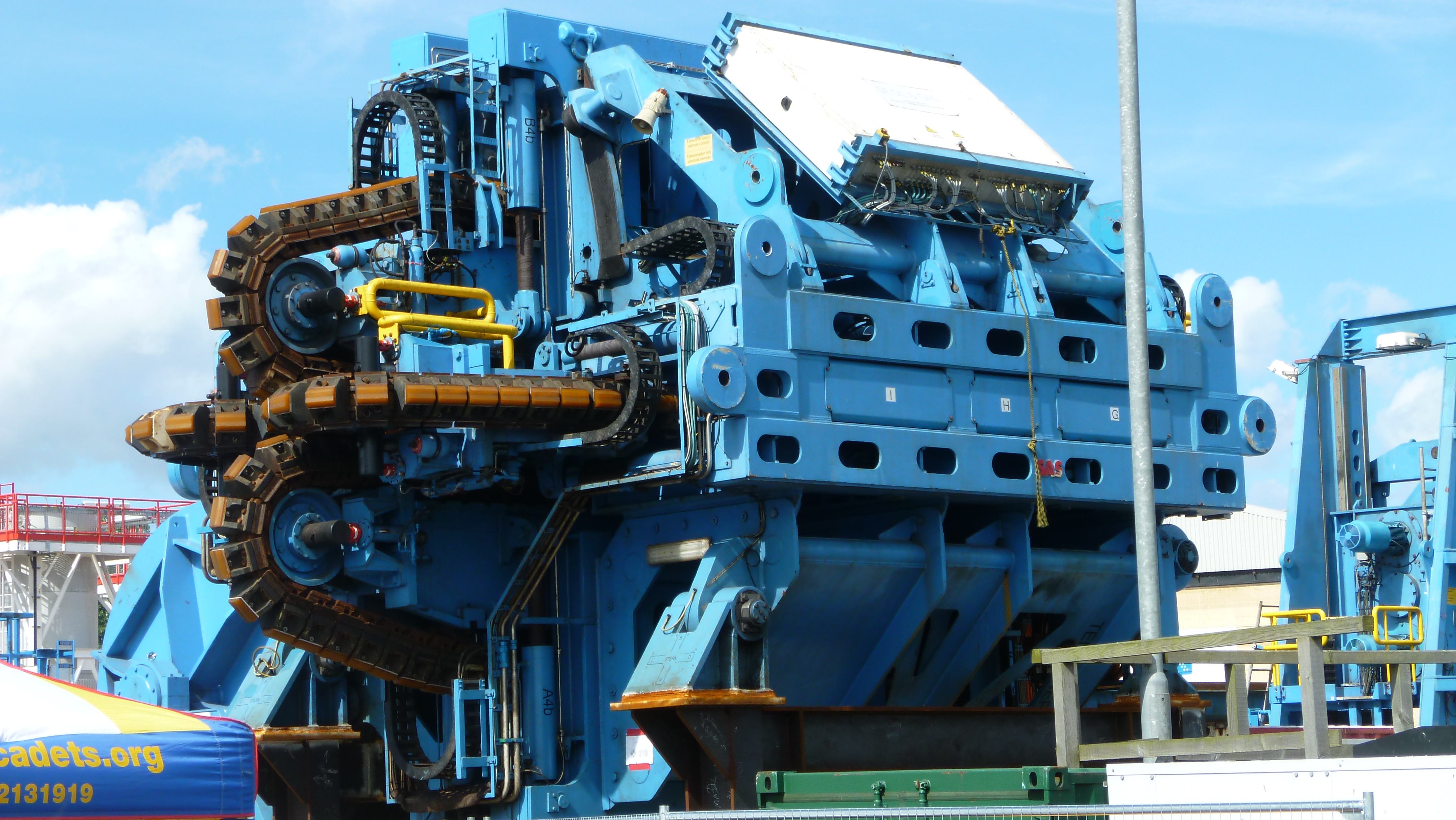 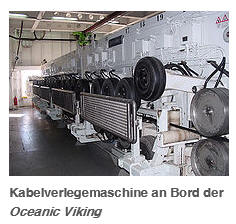
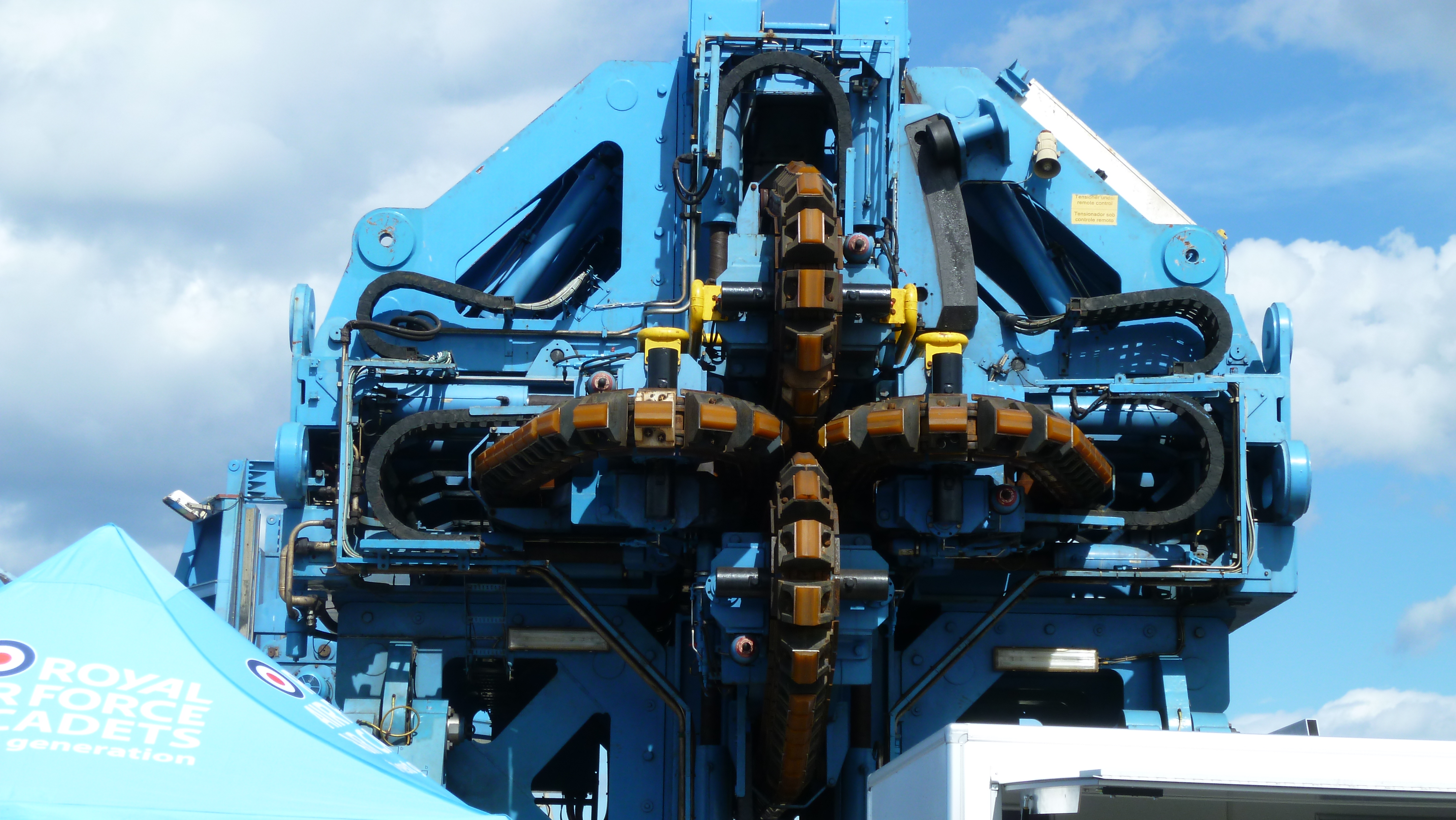
Cable laying machine today 2016
Roll transport in ship
laying and transport opening today
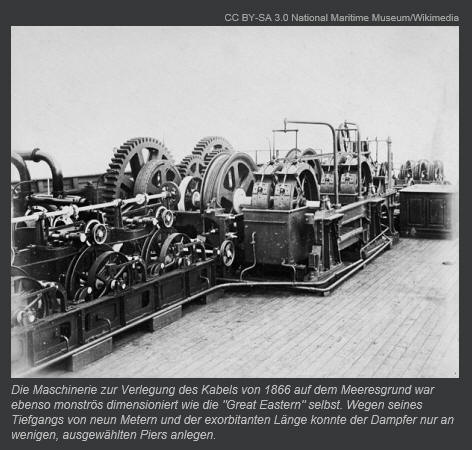
Mashine of cabley layer
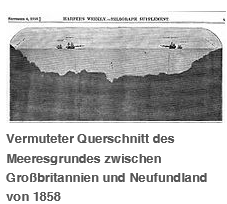



VIDEOs
 On
the roofs of Clouth factory(Photomaterial Manfred Backhausen)
On
the roofs of Clouth factory(Photomaterial Manfred Backhausen)
 Nippes, location Clouth factory
Nippes, location Clouth factory

 Clouth works 2007
Clouth works 2007
 Clouth factory demolitions
Clouth factory demolitions
Wichtigste Historie
Press clamps Clouth
Werke Cologne
still in
German Language!:
|















































.jpg)
















